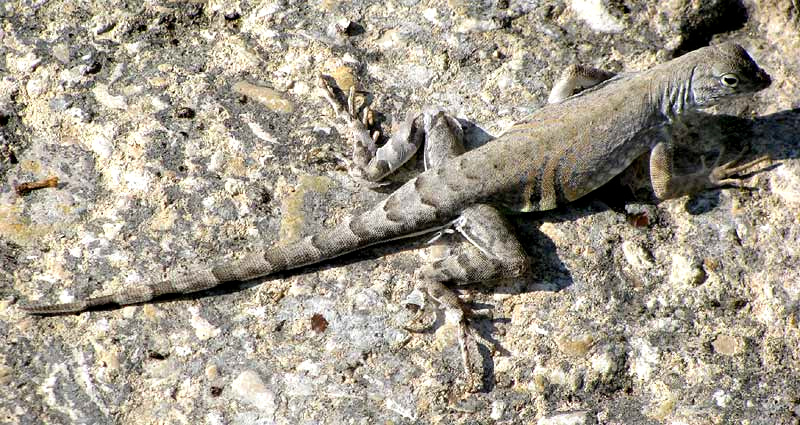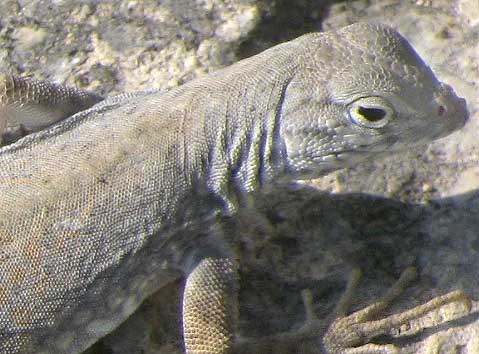Excerpts from Jim Conrad's
Naturalist Newsletter

from the August 25, 2013 Newsletter issued from the Frio Canyon Nature Education Center in the valley of the Dry Frio River in northern Uvalde County, southwestern Texas, on the southern border of the Edwards Plateau; elevation ~1750m (~5750 ft); N29.62°, W99.86°; USA
EARLESS LIZARD
We have a lot of lizards here. Every time you step outside Juniper House at the Center you see one or more Texas Spotted Whiptails with their narrow dark and light lines running lengthwise. Some whiptails have almost become pets, ignoring me when I go reposition the solar cooker. In the park in the valley, on trees you see Texas Spiny Lizards with their large, spiky scales.
This week I met another species very different in appearance from those. This one was about six inches long (15cm) and liked to perch atop limestone boulders strewn alongside the little Dry Frio River. He wasn't very nervous about my presence, but when I got to within about four feet he'd withdraw into shadowy spaces between boulders.
With such bold crossbars on the tail and those zebra-like lines up the sides just in front of the hind legs, and the blush of goldenness on the back, this was any easy identification to make. We have the Greater Earless Lizard, COPHOSAURUS TEXANUS, found mostly in arid northern Mexico, but extending north into the US from Texas to Arizona. I read that they run with their tails raised, maybe waving their tails from side to side when slowing to a halt or when they are about to run. I didn't see that, just the shifting back and forth between sunny boulder tops and dark crevices between rocks.
I hadn't noticed the lizard's earlessness until it was mentioned. Most lizards, like birds, have at least an ear hole between the eye and shoulders of the front legs but, it's true, this lizard has no obvious ear hole there, as you can confirm below:

In that picture you can also see another interesting field mark, which is that instead of having distinct, overlapping scales, the skin looks granular, like iguana skin.
The Greater Earless Lizard is such an unusual species that it's the only species in its genus, Cophosaurus. The "Greater" part of its common name refers to a smaller earless species in another genus, Holbrookia.
The Greater Earless feeds on a variety of adult and larval insect prey.